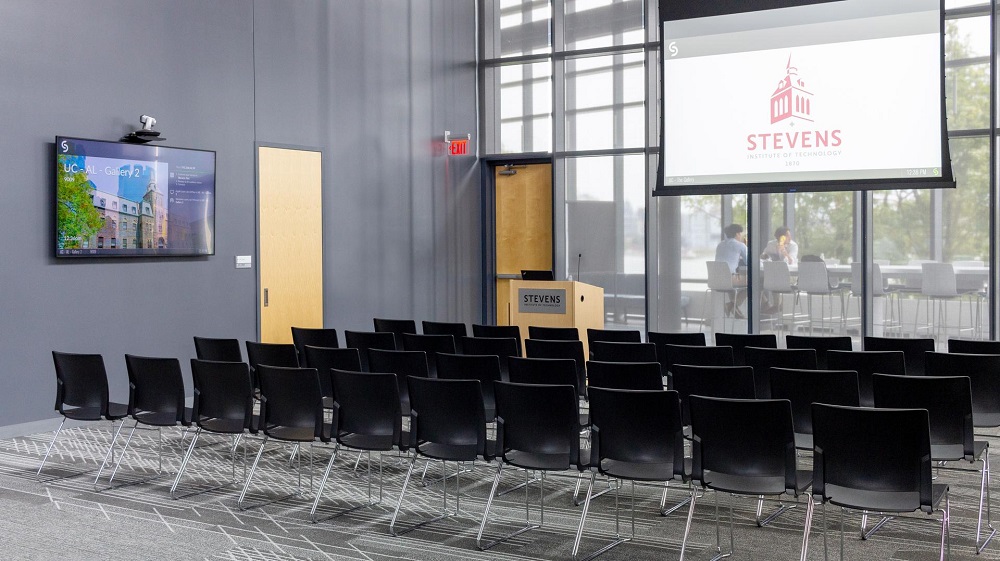Stevens Institute of Technology, a research university in Hoboken, N.J., uses Mersive Solstice Collaboration Platform and Pods to create a campus-wide networked AV infrastructure that not only fosters collaborative student-faculty interaction, but informs future system design and space planning using Solstice’s operational analytics.
The campus-wide technology transformation began more than five years ago with the goal of enabling students and faculty to connect wirelessly to audio and video, replacing outdated VGA and HDMI connections. As a result, it helped save up to $20,000 per semester on misplaced physical connectors and cabling.
Associate director of Academic Multimedia Services at Stevens Institute, Harry Ortiz, and his team put several different wireless presentation solutions through their spaces and found Mersive Technologies’ Solstice Collaboration Platform to be the most reliable, easiest to deploy and easiest to use.
“Designed from the ground up for collaboration and not just presentation, Mersive is leading the category. Many of the solutions we looked at are only now coming up to speed and catching up to where Mersive was five years ago,” says Ortiz.
Now, there are around 160 Pods across the Stevens campus, and growing. That growth is informed using insightful operational analytics via Solstice Cloud. Data via cloud shows the team how each Solstice Pod — and therefore each room — is being used. Stevens can see how many meetings are happening; how often collaboration tools are used; what devices users bring into the room and software platforms they use to connect; and even available connected room peripherals, such as video bars and hybrid-conferencing accessories.
Related: Video Bars in AV Projects: The Rise of Simplicity and Efficiency
“These analytics help us to make informed decisions on how to deploy technology and minimize the cost risks associated with unused spaces and systems,” says Jesus Candiotti, academic multimedia engineer. “For example, we used these analytics to launch a pilot system in select study rooms to see if the students will actually use the tech.”
When a new Solstice Pod is specified for a new learning space, Solstice Cloud also makes it easy and fast for the team to deploy. “We create a template, click to add the new Pod to the cloud, assign the template, and plug in the Pod. Everything then downloads to the Pod automatically for a very hands-off deployment,” says Candiotti. “This speaks to the natural evolution of the Solstice platform. We had no idea how it would continue to grow to provide useful new features. We also love that it’s all done via software updates, which gives us peace of mind that we won’t have to do a huge hardware overhaul anytime in the near future.”
Aesthetics are also a key factor when it comes to specifying technology for Stevens Institute. JBL Pro low-profile in-ceiling speakers, for example, are designed to look like ceiling tiles and blend in almost invisibly. To capture lecture audio, Shure 2×2 MXA series microphones are seamlessly stowed away in the ceiling and similarly look like ceiling tiles. Stevens uses Crestron cameras to capture video, while Samsung’s WAC interactive displays provide dynamic, engaging classroom experiences.










